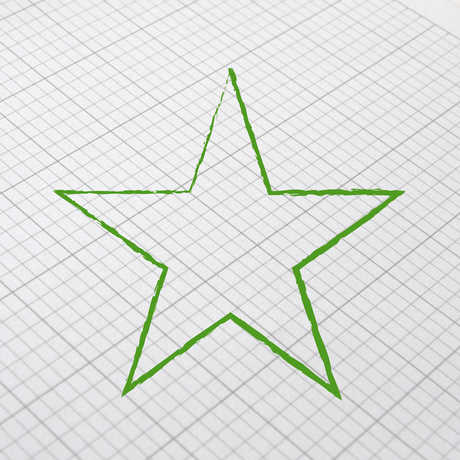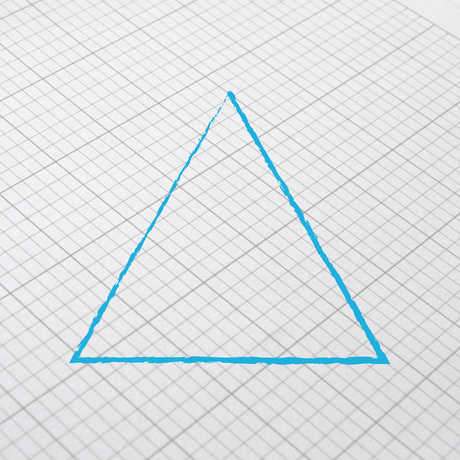
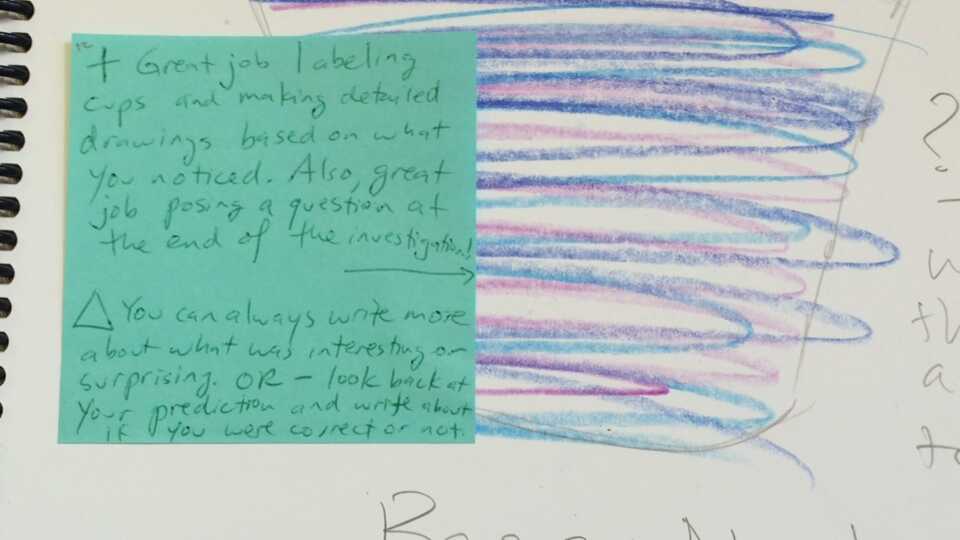
What assessment strategies can you use with science notebooks? Below you'll find tips on using notebooks to inform instruction and gather evidence about student learning.
Introduction
We encourage you to use notebooks as a tool for assessment, but not to focus on grading the notebooks themselves. Students should feel free to use their notebooks in a way that's useful for them, and should not be concerned about being evaluated for things like prettiness or spelling. After all, the notebook is merely a tool to help students learn science.
Formative Assessment
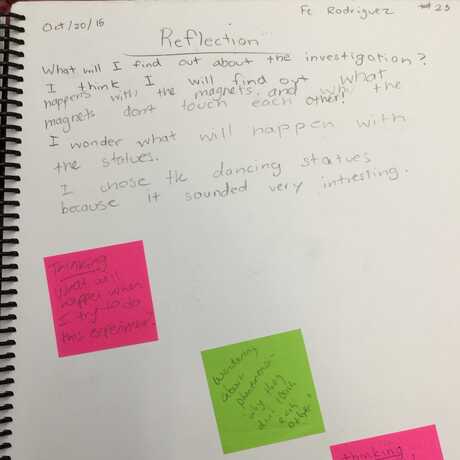
You can use student work in notebooks to inform your upcoming science instruction. Choose 5-7 notebooks (different each time) to scan after class. Ask yourself some or all of these questions:
- What did students understand? What were they able to explain clearly with their own words and pictures?
- What didn’t students understand? What misconceptions about science content appear in multiple students’ notebooks?
- What are students still curious about? Could that curiosity dictate what you investigate next? Can you use a question a student wrote in his/her notebook to drive the next lesson?
- What’s missing from student work? What instruction could help students to create more thorough and useful entries?
Self Assessment
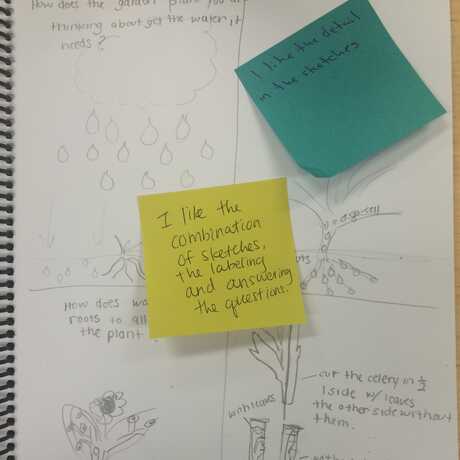
It can be helpful to periodically ask students to evaluate their own work in the notebook. Some teachers do this before they offer feedback to students.
- Ask students to put a post-it note on one page they feel proud of and one page they think they could improve. Why are they proud? How could they improve?
- Ask students to look at one page in their notebook and imagine another scientist reading over their shoulder. What might that scientist want to know? What else could they include to make their entry more thorough or clear?
Peer Feedback

Giving and receiving peer feedback benefits all students. Receiving feedback from a peer can feel validating and illuminating. And, reviewing someone else’s work may inspire students to try something new in their own notebook. Here are a few ways to facilitate peer feedback:
- Set-up a Gallery Walk [link to other lesson] where notebooks are opened to the appropriate page and set on surfaces around the room. Students walk around with post-it notes and write “I value….” compliments or “Another scientist might wonder...” questions that they have in response to a notebook entry. Consider using different colored post-its for compliments and questions.
- Have students partner up and review each other’s notebooks. You can offer a series of assessment questions for them to use to give each other feedback. For instance, if they are reviewing a page where students mapped out their plan for their investigation, you could ask: “Can you tell what your partner will do first?” “Are there any steps which are unclear?” “What is your partner’s focus question?”
Teacher Feedback
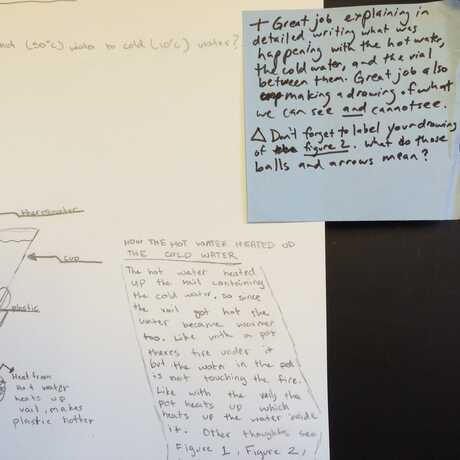
Engaging in a conversation with students in their notebooks can help them improve the clarity of their entries. Some teachers find it helpful to distinguish between entries that are meant for the student alone, and entries that are intended to communicate to scientific colleagues. When giving feedback to these entries, consider using the same prompts as in the peer feedback section:
- “I value…”
- “Another scientist might wonder…”
Notes from the Field

Here’s what Rachel has to say about giving feedback to her 5th grade scientists:
I try to give feedback to the 5th graders three times each year, usually just before report card time. I tell them to put sticky notes on two pages they think they did a great job on and want feedback on. I choose two pages to give feedback on, one of the ones they chose, and usually a page different from what they chose, although sometimes I'll choose both of their designated pages.
I write a 3x3 sticky note back to them with a "plus" and a "delta". The "plus" is something they did great and the "delta" is something they can work to change. The "plus" always starts with "Great job..." and the "delta" usually includes "don't forget to...", "explain your thinking", "label your drawings", "use the word because". Sometimes I'll give an example of how to change something or ask a question. Sometimes I'll use an arrow to point directly to what I was talking about.
When students get their notebooks back, they can look at their feedback and then either a) keep it on that page or b) collect it on the last page of their notebook. I usually have several students share out something they want to try and work on.
Rubrics
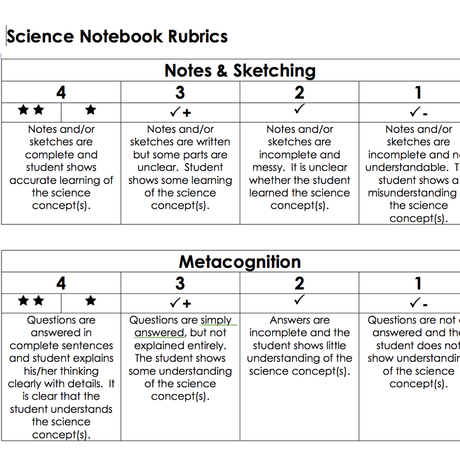
While we are not big proponents of numerically evaluating science notebooks, we recognize that some teachers need to give grades and the notebook can be a good source of evidence of student effort and learning. TISS alumna Heather Wong developed these rubrics, which can be used for that purpose.

Science Notebook Corner
Learn how notebooks can help your students think and act like scientists.

